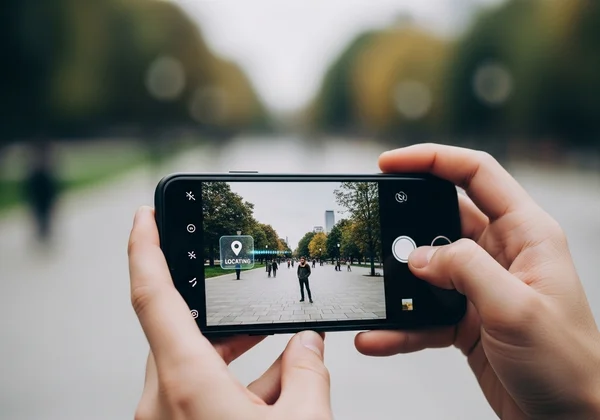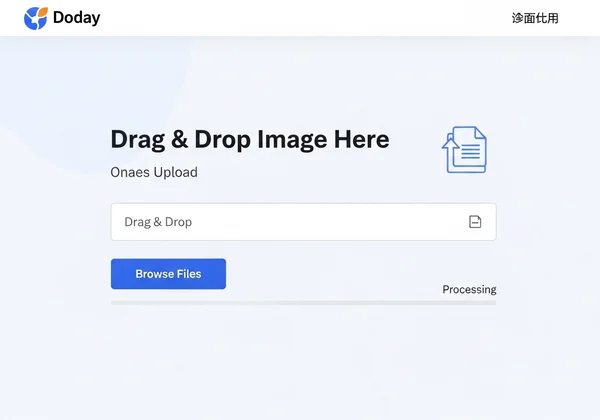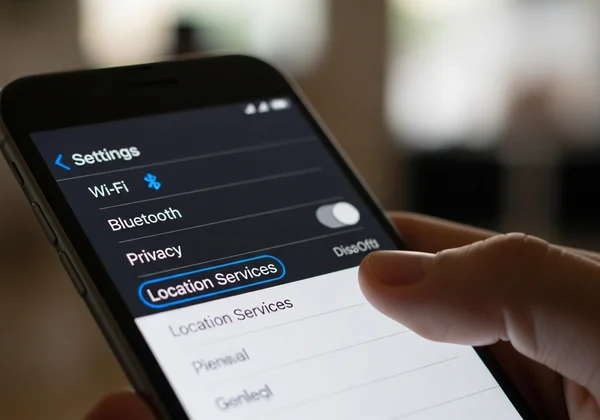Remove Geolocation Data: Protect Photo Privacy Easily
Every time you share a photo, you might be sharing more than just a memory. Hidden within your images could be a digital breadcrumb trail leading straight to your physical location. Are you unknowingly sharing your exact location every time you post a photo online? This hidden information, known as geolocation data, poses a significant risk to your personal privacy. Fortunately, you can take control. This guide will explain the dangers and show you how to easily remove geolocation data with a free, secure tool.
In our always-connected world, keeping your personal information safe is more important than ever. Whether you're a parent sharing family pictures or a professional sending work to a client, ensuring your photo privacy is a crucial step. With our user-friendly tool, you have a simple, instant solution to protect your privacy by stripping sensitive data from your images before they ever go public.
What is Geolocation Data in Your Photos?
Geolocation data, often called a geotag, is a set of GPS coordinates embedded into a photo's file information. This data pinpoints the exact latitude and longitude where the picture was taken. It's a form of metadata, which is essentially "data about data," providing extra details about the image file itself. While sometimes useful for personal organization, it becomes a major privacy concern when shared publicly.

Understanding GPS and EXIF Data in Images
Most modern cameras and smartphones automatically record a wealth of information in a format called EXIF data (Exchangeable Image File Format). This data includes camera settings like aperture and shutter speed, the date and time, and, if enabled, precise GPS coordinates. Anyone with access to the image file can view this EXIF data using simple software, revealing the exact spot where you captured that moment—information that can compromise your safety.
How Your Devices Capture and Store Location Information
Your smartphone is the primary culprit. By default, the camera apps on both iOS and Android devices use the phone's built-in GPS to tag every photo with your location. This feature is often enabled without users even realizing it. High-end digital cameras also have this capability. The location information is then permanently stored within the image file, traveling with it wherever it's uploaded or sent, unless you take specific steps to remove it.

Why You Should Remove Geolocation Data from Photos Before Sharing
The convenience of automatic geotagging comes with serious downsides. From personal safety to professional liability, the reasons to strip GPS from photos are compelling for every type of user. Taking a moment to clear metadata before sharing is a small action with a big impact on your digital security.
Personal Safety and Privacy Risks of Geo-Tagged Photos
For the everyday social media user, geo-tagged photos can be dangerous. Sharing a picture from your home can reveal your address to strangers. Posting vacation photos in real-time tells the world your house is empty. Over time, a collection of geotagged photos can paint a detailed picture of your daily routine, including where you live, work, and where your children go to school. This creates an unnecessary risk of stalking, burglary, or other unwanted attention, making photo metadata removal an essential safety habit.
Protecting Professional Assets and Client Confidentiality
For photographers, designers, and content creators, protecting client confidentiality is paramount. A photo taken at a client's private residence or an exclusive event could inadvertently leak a sensitive location. Furthermore, photographers may want to protect the locations of unique photo shoots to prevent competitors from finding them. Removing location data ensures that you maintain professional standards, protect your clients' privacy, and safeguard your creative assets. Using an exif data remover is a key step in a secure professional workflow.
Legal and Compliance Implications for Businesses (e.g., GDPR)
Businesses have a legal and ethical responsibility to protect personal data. An image of an employee or customer posted on a company website could contain location data, potentially violating privacy regulations like the GDPR (General Data Protection Regulation). This could lead to significant fines and damage to the company's reputation. To ensure full compliance and demonstrate a commitment to data security, organizations should implement a policy to remove all metadata from photos before public use. A tool like our online metadata remover can be an integral part of this compliance strategy.
Step-by-Step: How to Strip GPS from Photos Online with Ease
You don't need to be a tech expert to protect your photo privacy. Our platform was designed to be the simplest and most secure way to remove image metadata online. The entire process takes just a few seconds and requires no software installation or registration.
Uploading Your Image to MetadataRemover.org
Getting started is incredibly straightforward. First, visit our homepage. You will see a large, clearly marked area where you can simply drag and drop your image file from your computer. Alternatively, you can click on the box to open a file browser and select the photo you wish to clean. Our tool supports all major image formats, including JPEG, PNG, TIFF, and GIF. We designed the process for maximum ease of use, so you can try our free tool without any hassle.

Instant Geolocation Data Removal & Secure Download
The moment you upload your photo, our tool gets to work. It instantly processes the image file, stripping all EXIF data, including GPS coordinates, camera information, and timestamps. Your privacy is our top priority. We do not store, view, or share your images; all processing is done securely, and your original photo is never saved on our servers. Once the process is complete, you can immediately download the clean, metadata-free version of your picture, ready to be shared safely.
Best Practices for Ongoing Photo Location Privacy
While using a metadata remover is an effective solution, adopting a few preventative habits can further enhance your photo location privacy. Taking a proactive approach gives you complete control over your digital footprint.
Disabling Location Services on Your Smartphone & Camera
The best way to prevent location data from being recorded is to turn the feature off at the source. On an iPhone, go to Settings > Privacy & Security > Location Services > Camera, and select "Never." On Android, the path is typically Settings > Location > App permissions > Camera, where you can deny permission. Check your digital camera's manual for instructions on how to disable its GPS function. This simple change stops geotagging before it starts.

Verifying Your Photos Are Geo-Tag Free After Processing
Trust but verify. After using a tool to delete geo-tagging, you can confirm that the data has been successfully removed. On a Windows PC, right-click the downloaded image, select "Properties," and go to the "Details" tab. On a Mac, open the image in Preview and select "Show Inspector" from the "Tools" menu, then click the "GPS" tab. You will see that the location fields are now empty, giving you peace of mind that your photo is safe to share. It's the final step to secure your photos.
Secure Your Digital Footprint: Your Guide to Photo Privacy
In a world where sharing is second nature, protecting your privacy doesn't have to be complicated. Geolocation data is a hidden risk, but it's one you can easily eliminate. By understanding what it is, why it's dangerous, and how to remove it, you empower yourself to share memories safely and confidently.
Make it a habit to clean your photos before you post them. With a simple, free, and secure solution at your fingertips, there's no reason to expose your location to the world. Take control of your data today. Visit MetadataRemover.org to drag, drop, and download your secure image in seconds.
Frequently Asked Questions About Photo Geolocation Data
What exactly can geolocation data in photos reveal?
Geolocation data can pinpoint your exact whereabouts with surprising accuracy. It can reveal your home address, your place of work, the park where you take your children, your favorite restaurants, and your vacation spots. A collection of geotagged photos can be used to track your movements and establish your daily patterns, creating serious personal safety risks.
Can I remove location data from photos on my iPhone or Android directly?
Yes, it is possible to remove location data on some mobile devices, but the process can be cumbersome and inconsistent. For example, on an iPhone, you can do it from the Photos app's "Adjust Location" feature, but you have to do it for each photo individually. Using a dedicated online metadata remover free of charge, like ours, streamlines this process into a single, reliable step for any photo from any device.
Is using an online metadata remover safe for removing GPS data?
This is a valid concern, and we built our tool with security as the core principle. Our platform is a safe exif remover because we do not store or copy your images. The photo is processed in real-time, and the clean version is provided for immediate download. Your original file never resides on our servers, ensuring your privacy is fully protected throughout the process.
Does removing geolocation data affect photo quality?
No, removing geolocation data and other metadata does not affect the visual quality of the image at all. The process only strips away the invisible text-based information (the EXIF data) from the file. The pixels, colors, and resolution of your photograph remain completely unchanged, so you can share a high-quality, secure image.